Distance from gas equipment to electrical wiring: technical regulations
When arranging the gas supply for your house or apartment, you need to think over a huge number of things, in particular, the distance from the outlet to the gas pipe, regardless of when the wiring was installed or reconstructed, before the development of the project or after.
Another crazy requirements, recommendations to complicate the process or reasonable standards? And what will happen if you do not comply with the rules and sculpt the wires anywhere?
We will answer you in detail to these and many other questions about the combination of electricity and gas supply in one room.
The content of the article:
Location of electrical wiring and gas equipment
Kitchens in different apartments and houses differ from each other in their sizes. It can be a chic plantation for cooking, a place in which everything you need can be placed completely or a small closet where you can fit a stove with a refrigerator and a cupboard for cereals - and that's good.
One way or another, in any kitchen there is an electrical wiring supplying the hood, pumps, equipment for supplying and circulating water, as well as household appliances, such as a refrigerator or microwave.

And this is at a minimum, not counting the electrically dependent heating boilers and gas stoves.
Thus, wiring is almost always combined with a gas pipeline in the same room.
What does the law say?
Of course, the distance between the carriers of these two energy resources is not far-fetched, but carefully calculated by experts and included in the relevant regulations.
It:
- PUE-6;
- PUE-7;
- SP 402.1325800.2018.
Let's start with the PUE (electrical installation rules). We are interested in the 6th and 7th edition. AT paragraph 2.1.56 PUE-6 it is indicated that when crossing wires and cables with pipelines containing flammable gases, the distance between them must be at least 100 mm.At the same time, wires passing in the “hot” zones must be provided with additional thermal protection and protection against mechanical damage.
Features of parallel laying describes paragraph 2.1.57, in which the distance is normalized to 400 mm and, again, next to the hot pipes, the wires and cables must be protected.
PUE-7 more categorical. Item 7.1.50 normalizes a distance of 0.5 meters from any switches, sockets and other electrical installation elements.
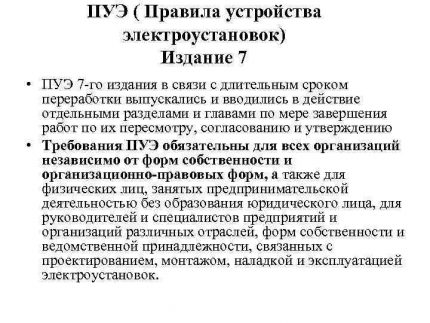
However, there are still binding rules for the design of gas consumption systems introduced by all June 6, 2019 and defined as SP 402.1325800.2018.
Consider what is said in this Code of Conduct on gas pipelines and wiring. ATparagraph 5.1 it is indicated that any gas stove should be equipped with a gas-control system that helps to prevent the flow of fuel to the nozzles if the flame goes out. And besides, between gas valve and the hose is installed dielectric insert.
The requirements for ensuring fire safety are very strict, eliminating the possibility of a rapid spread of flame in the event of such a danger.
Paragraph 6.15 indicates the distance of the internal gas pipeline network from the power supply - horizontally at least 40 cm, vertically - at least 10 cm.
At the same time, if gas-powered devices are connected to the power grid, and, as we have already said, these are ubiquitous, separate rules apply, which we will also consider now.
First of all, the distance from the gas boiler to its electrical outlet - no more than 0.5 m.
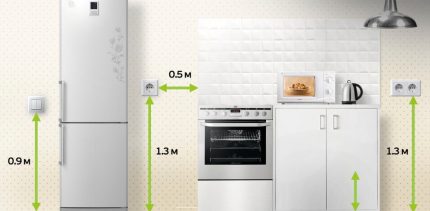
The socket, to which the equipment running on blue fuel is connected, must necessarily be earthed and be easily accessible for quick disconnection or visual inspection.
Please note that the electric cable should not have any mechanical impact and during installation / operation it is forbidden to allow any twisting, stretching and other negatively affecting the integrity of the wiring actions.
It is strictly forbidden to place wiring in the immediate vicinity of any temperature influences. Including, the distance from the gas stove to the outlet connected to it does not differ from the boiler - no more than 0.5 m with no contact points.
Basically, it is these documents that regulate the distance of electrical wiring and electrical sources from the gas pipe in any cases, both when connecting devices running on this fuel, and to independent installations.
Why do you have to keep distance
At first glance, gas and electric current are 2 different resources working in the complex. And meanwhile, they are absolutely incompatible in direct contact with each other. What is the reason for this?
Upon contact with a hot medium, electrical wiring undergoes temperature melting, resulting in a short circuit and, as a result, a fire.

Even if an accident on the wire line does not occur due to heating from gas-using equipment, in close proximity to it, in case of simultaneous gas leakage, even a small spark can provoke an explosion. Not to mention the fire of electrical wiring and the effects of flame on gas pipes.
But that's not all.It is very important to provide a high-quality wiring, located next to the gas distribution system. Often, especially in houses of old buildings, wires were laid according to the zero-phase system, that is, grounding was not provided.
A modern wiring system involves the transition to a three-wire. Accordingly, in the old switchboards, not designed for 3 cores, the "ground" is thrown to zero.
During the connection of a large number of electrical appliances, zero can burn out, which leads to an increase in voltage and fire. Imagine what will happen if the voltage drops on a gas stove connected to electricity.
In fact, a ten effect can occur in pipes leading to the riser, not to mention the more serious consequences, for example, an explosion. The dielectric insert referred to in SP 402.1325800.2018 is necessary in order to neutralize the conductivity gas hose.
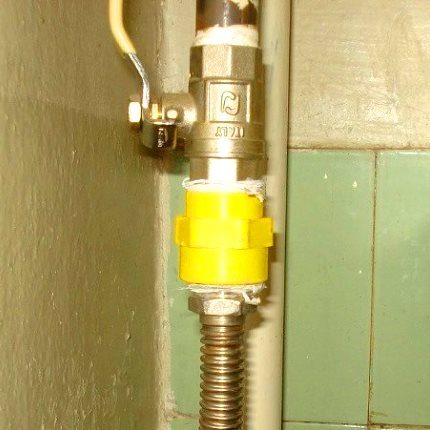
Dangerous and bare, due to any reason, the electrical wiring that got on the gas pipes. He will create a voltage on the pipeline, which will, in principle, be grounded, but in theory it is still dangerous for life and possible fire.
Responsibility for non-compliance
Of course, as in the case of any other violation of the approved norms and rules, if the required distances from the gas pipe to the laid electric cable are not respected, liability is provided for citizens.
Administrative Code of the Russian Federation Article 9.4 promises to impose fines on violators. Well, and of course, for a dangerous connection, various regulatory documents practically provided disconnection from the line when troubleshooting is not resolved.
By the way, monetary punishments are not so significant, even for repeated violation.
And, on the one hand, the contractor will be punished anyway, and this, by all the rules, is an organization that has permissions and licenses for laying gas and electric networks. And they will not initially take risks if a responsible organization with work experience is selected.
But, as practice shows, most consumers use the services of private electricians without proper documentation and contracts or make wiring independently.
And this is already Art. 7.19 Administrative Code of the Russian Federation - unauthorized connection, which also faces a fine. Well, and of course, in the case of unintentional harm to health and damage to property of other citizens as a result of illegal activities, the punishment will be even harsher - up to imprisonment.
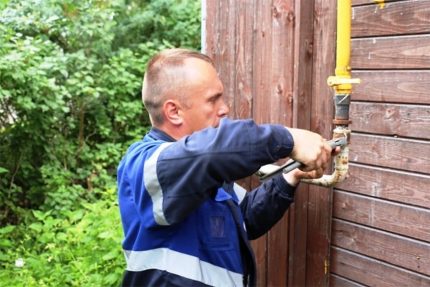
It is very difficult to answer unequivocally the question of what awaits you if you do not observe the required distances. It is all at the discretion of higher and official authorities.
How to avoid problems?
Above all, following the rules is your health and safety for your life.
Therefore, if you combine gas and electrics, use a few simple recommendations:
- Follow the rules of the EMP and the joint venture exactly.
- At the entrance to your apartment, mount a residual current device that guarantees a power outage in case of problems with the neutral wire.
- Before installing the wiring, make sure that the new one matches the wiring of the old circuit (if it does not change).
- A gas stove must not be grounded through a gas pipeline, as well as ordinary household items that run on electrical energy.
And besides, be sure to use the services of experienced electricians and conclude contracts when installing electricians for gas appliances.

All of these recommendations will help you avoid problems with regulatory structures and ensure a safe energy supply.
Conclusions and useful video on the topic
What is electric ignition and gas control, is it necessary to combine gas and electricity:
Thus, the PUE and SP, normalizing the distance to the gas pipeline, are stated clearly and do not allow contradictions in practice. However, the fact that all these rules were not developed at all in order to complicate your life, but in order to save it, as well as your property, life, health and things of other people living with you or nearby.
Have you followed the standards when designing gas and electricity equipment in your home or apartment? Share your experience with us in the comments, and ask questions of interest to the topic of the article.

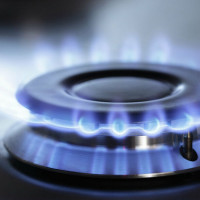 Fire safety of gas equipment: rules and regulations for the operation of gas appliances
Fire safety of gas equipment: rules and regulations for the operation of gas appliances 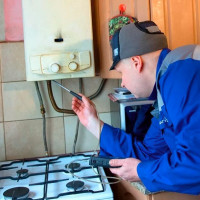 Rules for the operation of gas equipment in residential buildings: measures and standards for safe use
Rules for the operation of gas equipment in residential buildings: measures and standards for safe use 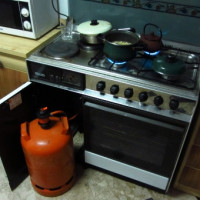 Is it possible to keep a gas cylinder in an apartment: rules and regulations for the use of balloon gas
Is it possible to keep a gas cylinder in an apartment: rules and regulations for the use of balloon gas 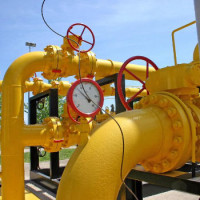 Gas pressure: technical standards + distribution features on the line for gas pressure
Gas pressure: technical standards + distribution features on the line for gas pressure 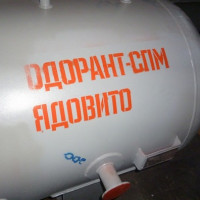 Natural gas odorant: features of odorants, norms and rules for their entry
Natural gas odorant: features of odorants, norms and rules for their entry 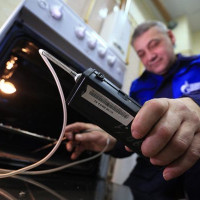 Gas inspection in an apartment: how and how many times gas equipment inspections should be carried out
Gas inspection in an apartment: how and how many times gas equipment inspections should be carried out  How much does it cost to connect gas to a private house: the price of organizing gas supply
How much does it cost to connect gas to a private house: the price of organizing gas supply  The best washing machines with dryer: model rating and customer tips
The best washing machines with dryer: model rating and customer tips  What is the color temperature of light and the nuances of choosing the temperature of the lamps to suit your needs
What is the color temperature of light and the nuances of choosing the temperature of the lamps to suit your needs  Replacement of a geyser in an apartment: replacement paperwork + basic norms and requirements
Replacement of a geyser in an apartment: replacement paperwork + basic norms and requirements